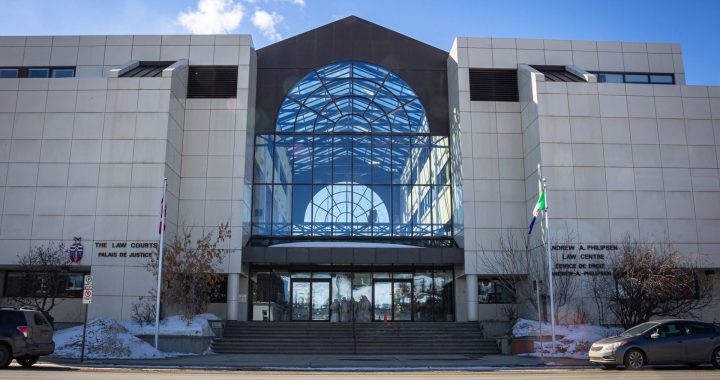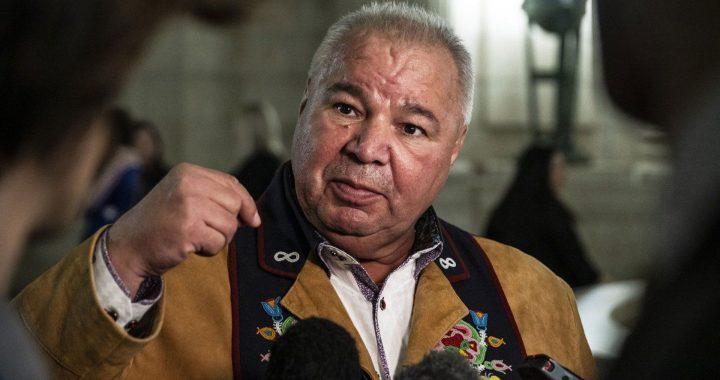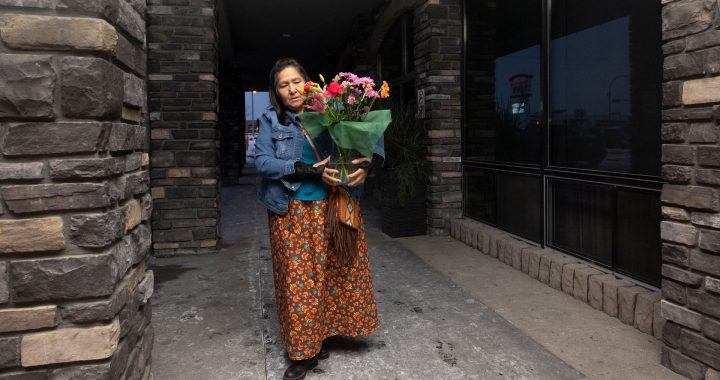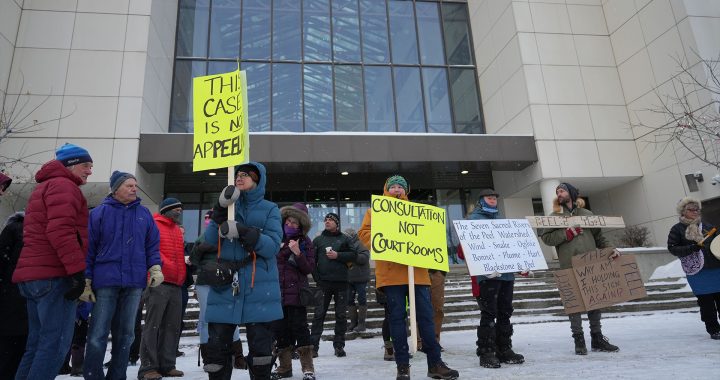InFocus Podcast
Subscribe to the InFocus podcast and listen to other episodes here
Apple PodcastsSpotifyGoogle PodcastsFrom the west coast to the Golden Horseshoe surrounding Toronto, there is evidence to suggest serial killers are hunting and disproportionately, Indigenous women and girls are their prey.
And those serial killers likely number far more than the average person imagines.
That’s according to Michael Arntfield, a Western University criminologist and serial killer expert who studies murder patterns for the Murder Accountability Project in the U.S.
“There is very good research on west coast and the north west in the U.S and in Canada which helps explain a lot of patterns seen in lower mainland and B.C and in the Highway of Tears region,” Arntfield said, referring to the 724-kilometre stretch of Highway 16 in northern B.C where 18 – 50 women, mostly Indigenous, have gone missing or been found murdered since the 1960s.
While Canadian data is hard to come by, data generated in the U.S. is helpful in guessing patterns north of the border.
“When we input all the (American) data at murderdata.org and we see both coasts light up. We see the D.C. metro region and the Great Lakes region light up and we see major trucking centres light up,” Arntfield said.
“We don’t know for sure in Canada because no one will give us the data but for sure you would see Edmonton up to Fort McMurray (light up) that’s already well established… certainly Manitoba through to Northern Ontario and down through the Golden Horseshoe and the Greater Toronto area as well.”
It’s something police in Canada are reluctant talk about, but something that many missing and murdered Indigenous women and girls advocates have long theorized.
While serial killers in urban centres can be from an assortment of walks of life, who hunt victims in a variety of settings and circumstances, those who prey in isolated rural areas are often long-haul truckers.
But don’t think that makes them easier to catch, Arntfield says.
“The (FBI’s) Highway Serial Killer Initiative has about 400 to 450 offender profiles of unidentified subjects on its database alone that are involved in the trucking industry for the entire Interstate system (in the US),” Arntfield told APTN InFocus host Melissa Ridgen.
Many of them travel back and forth across the Canada-U.S. border. Given the significant distances and jurisdictions involved, the lack of witnesses and fresh forensic evidence and often the fact that where a victim is found is nowhere near where she went missing, these cases are often tough to solve.
It’s a troubling issue that the trucking industry has come to accept – in the U.S. at least. Truckers Against Trafficking is a group that trains truckers how to be on the lookout for women in danger and also, predators among them. It’s not know how effective those tools are in prevention.
“In Canada we know even less about (serial killers on truck routes) because the data just isn’t available,” Arntfield said. “We’ve tried to build a database in Canada that would allow us very clearly to see and visualize on a screen, coast to coast, who is being targeted, what numbers and how. We’ve faced roadblocks at every turn in this country.”
Lack of political will to have such a database is only part of the problem.
“Murder data in Canada, is owned by StatsCan, and it decides, rather than the experts, who should know what,” he said. “Essentially control the narrative on homicide.”
And too often indigenous women aren’t properly listed as murder victims, he said. Rather they’re categorized as accidental deaths or suicide or death by misadventure. So while StatsCan says the murder rate for indigenous women is six times higher than for non-indigenous women, it’d be even higher if some deaths were properly deemed homicides.
While most murders are found to be committed by those known to the victim, usually someone close to them, Arntfield pointed out that in 2016 there was new overall low in Canada and the U.S. for murder clearance rates.
There are three prevailing hypothesis as to why murders are getting harder to solve.
“The way society has gone and how individualistic and compartmentalized people are, that is the end of the community,” he said. The second theory is that there are more people killing random people which makes the investigation tougher off the hop. And those killers, experts believe, are savvier than in the past.
“They watch TV, the know how to sort of create doubt, create two separate crime scenes, move a body, introduce staging,” Arntfield said.
Third, he believes less qualified people are attracted to policing and move up the ranks to major crimes investigations.
“It’s probably the most frightening, which is cities that are consistently lowering their recruiting standards because they are desperate for people. Police work is not a sought after profession anymore, certainly not in this country.
Some agencies have no credit check, no physical tests, no written tests, essentially, people who would have been screened out of immediately from being considered are now getting in. In two to three years are winding up in specialty units like homicide,” he said.
When asked if data crunchers and criminal analysts have an idea how many serial killers are out there, he said “we estimate that there are 4,000 active in the United States right now” but the lack of homicide data available in Canada makes it impossible to estimate the number of serial killers here. Arntfield says even a fraction of the number they believe are operating in the U.S. would likely be shocking figure to most Canadians.
While Canada is leaps ahead of the U.S. in terms of admitting indigenous women and girls are disproportionately at risk of going missing or being found murdered, he doesn’t believe the national inquiry will do anything to take the issue further
“I guess I’ve wanted to know where are the deliverables? What was the outcome intended to be? Was this an exercise in storytelling and a catharsis – which is valuable. But I was thinking more like this would be a Congressional hearing like in the U.S. where there needs to be changes in legislation and policy that come from it,” Arntfield said.













We need to call for reform people! The next person goes missing could be someone you know and love!Let’s demand better more accountable policing, with a national DNA database that women and men at risk ,can willingly put in their DNA, only problem?The police have very few people who trust them now, bc of the gross miscarriage of justice in the willie pickton case.There needs to be a complete overhaul,but, how many more will die?Will you sit there and say, oh well, she was native,a drug user,All life is precious, and until we as a society wake up out our own self absorption,more will die…and next time, it could be someone targeting some one You love….they do change their modus operandi….Wake up Canada!
For almost 25 years I was an Long haul trucker that did cross border hauling, I am a woman. Almost every night I was awaken in the US truck stops with young girls and women banging on my door to offer sexual favors. In Las Vegas one night I watched a girl who I swear wasn’t more than 14 go from truck to truck, she was busy all night. She had a hand held CB Radio and had customers lined up before she was done with the one she was with.It wasn’t as bad in Canada but the desert States were the worst, Victorville California, you could hardly get any sleep there were so many, Bakersfield and Fresno have motels right beside the Truck stops, I would hang out my no Lot Lizard sign and sometimes that worked but I also could not make other truckers aware I was a Lady alone in my truck because then that put me in danger. I know that my male cohorts had favorite towns to stop in and ladies to see there, if you control the soliciting at truck stop at least you would save a few lives, once those girls are in that truck, if something bad is going to happen, all is lost there is nothing they can do to save themselves. There are so many trucks on the move in every direction I believe a person could go for many years before they were caught, Like ghosts they move through society anonymously, like smoke they just disappear and reappear somewhere else.I did little things to make it look like I had a man in the truck, when I went in for a meal I carried two coffee mugs, would walk a few feet from the front of my truck and turn back and look at the truck and then wave at it, as if there was someone in there to see me wave. No one knew there wasn’t, they thought there was a co driver in my truck watching me, It helped me keep safe.
Excellent article. Perhaps the Canadian government could commit to working with the First Nation Institute on Governance to review data on murder/homicides/accidental deaths. Or set up a ERB board of Indigenous justice experts to weigh in on statistics beyond the desk of StatsCan.
I myself have seen deaths marked as accidental or alcohol/drug related when they clearly were homicides. Many police detachments on reserve and especially remote communities are unwilling to list homicides and invite investigations or tie up resources to one file when they are already under resources and understaffed. Or perhaps simply, they don’t care. And this is where the cops, courts and corrections collide with law and policy in an ongoing genocide of all Indigenous people—women, girls, boys and men.
This guy is spouting some very false and presumptuous statements. Infact this is liablous stuff, to insinuate that stats can is only releasing stats to push a false narrative? Really? No evidence whatsoever. This guy is laughable. And clearly not who he claims to be.
I also like to think it’s along the railways too..